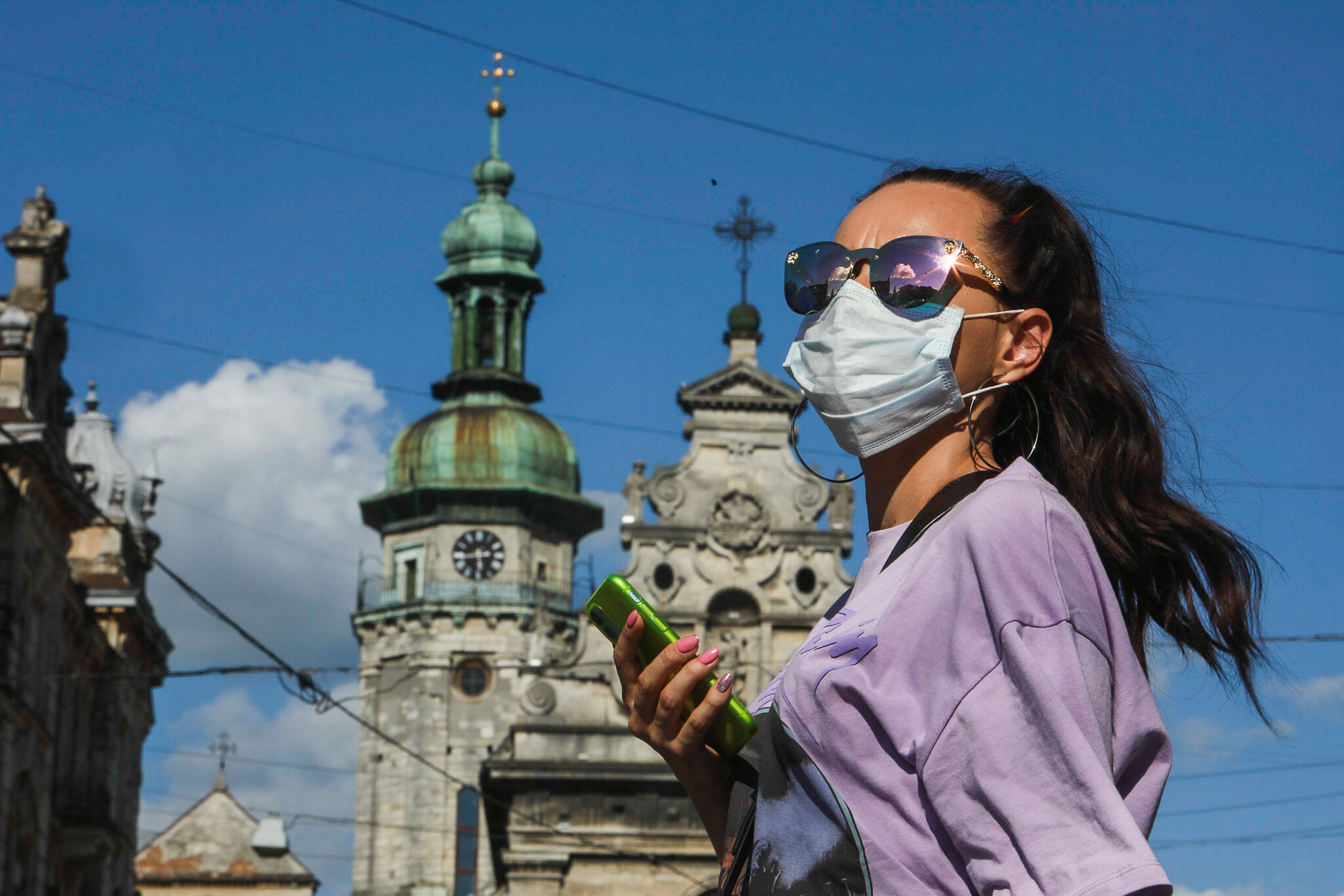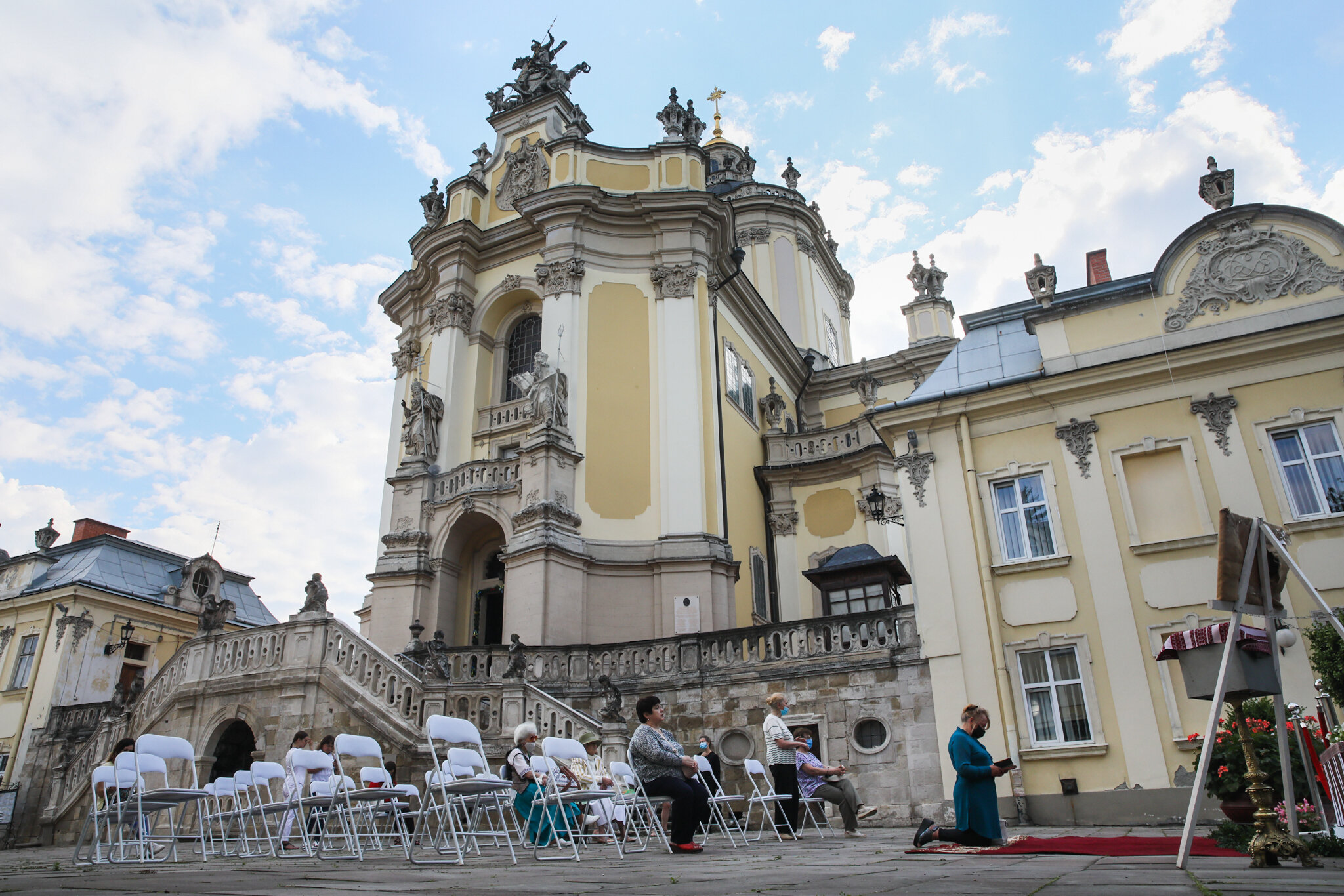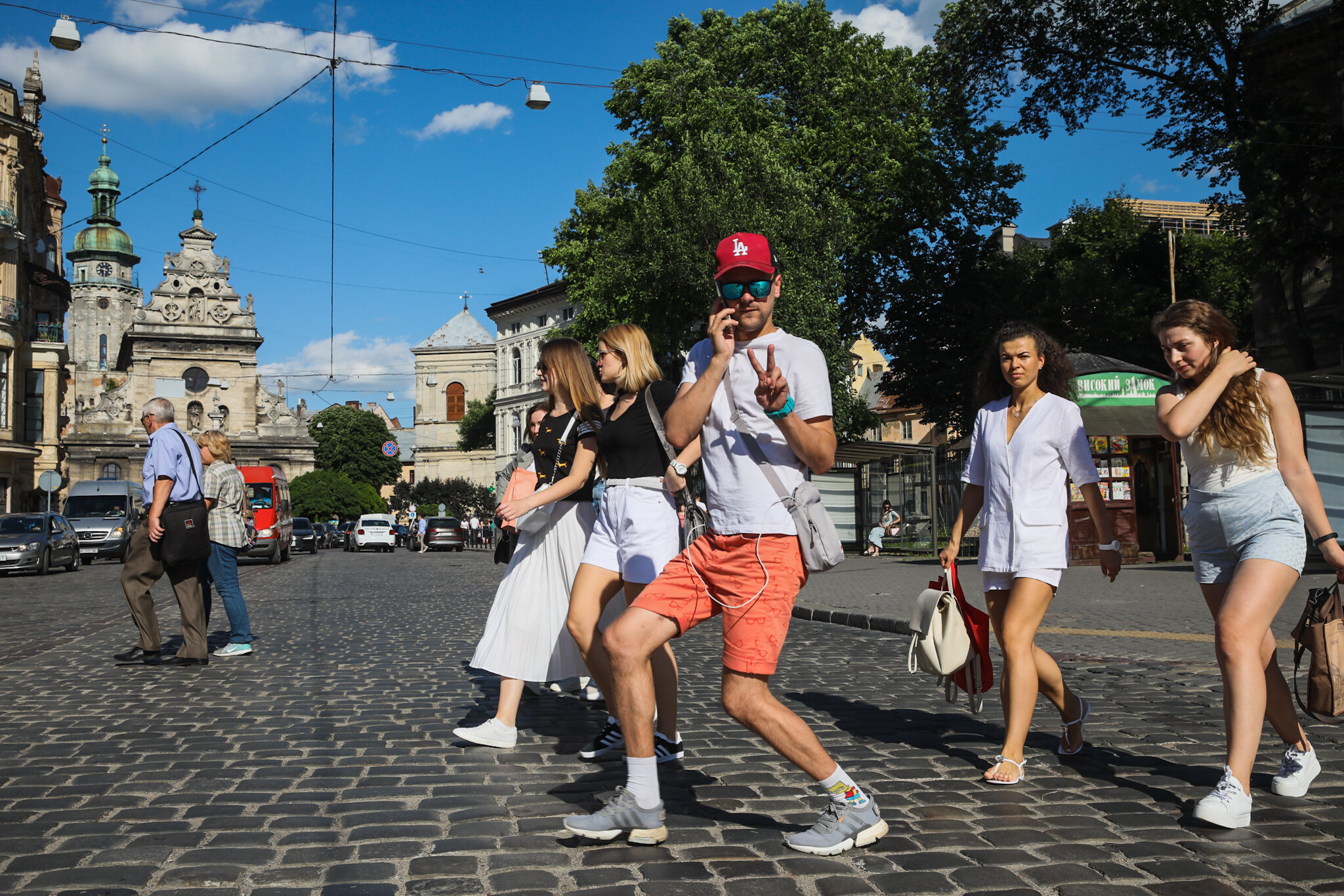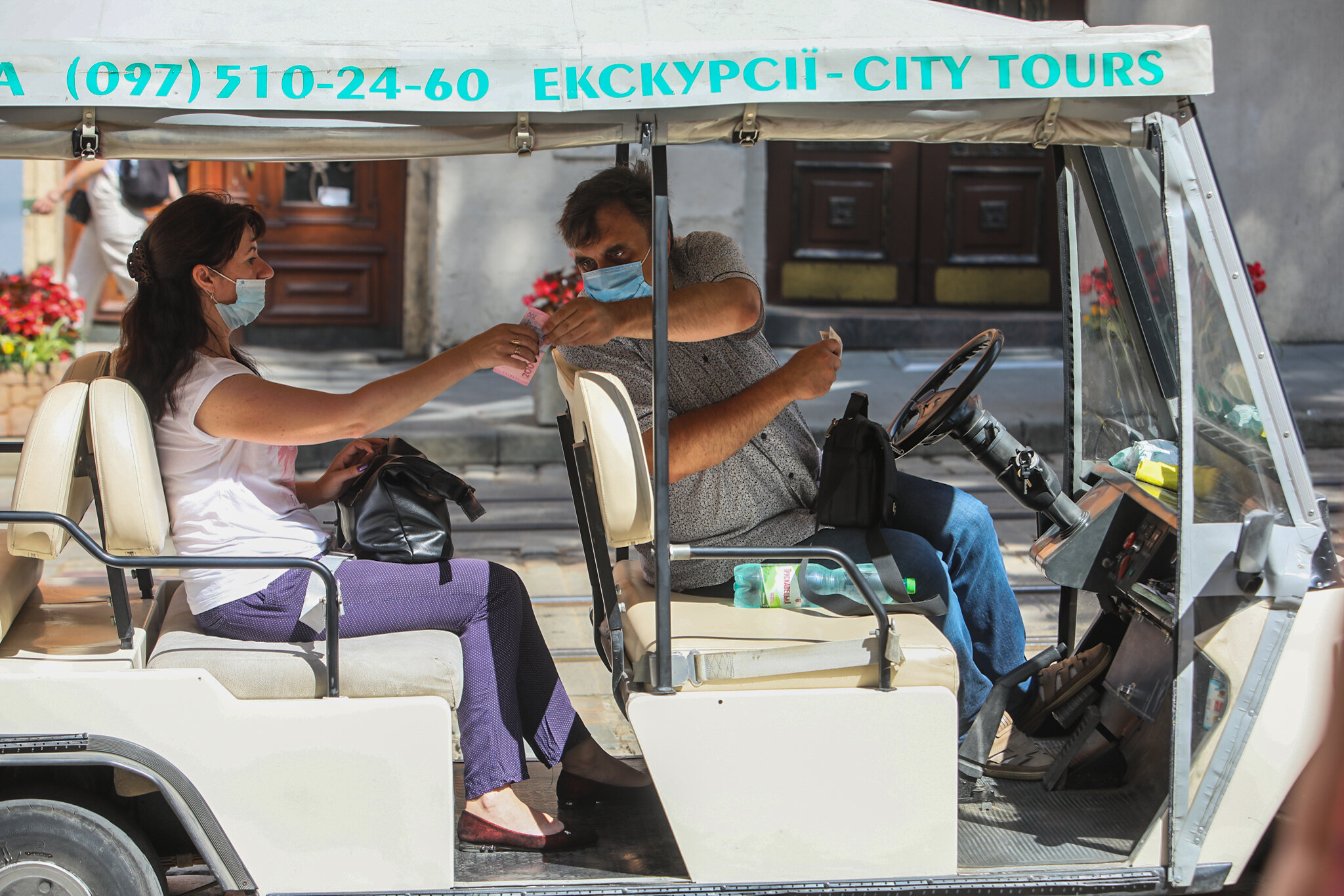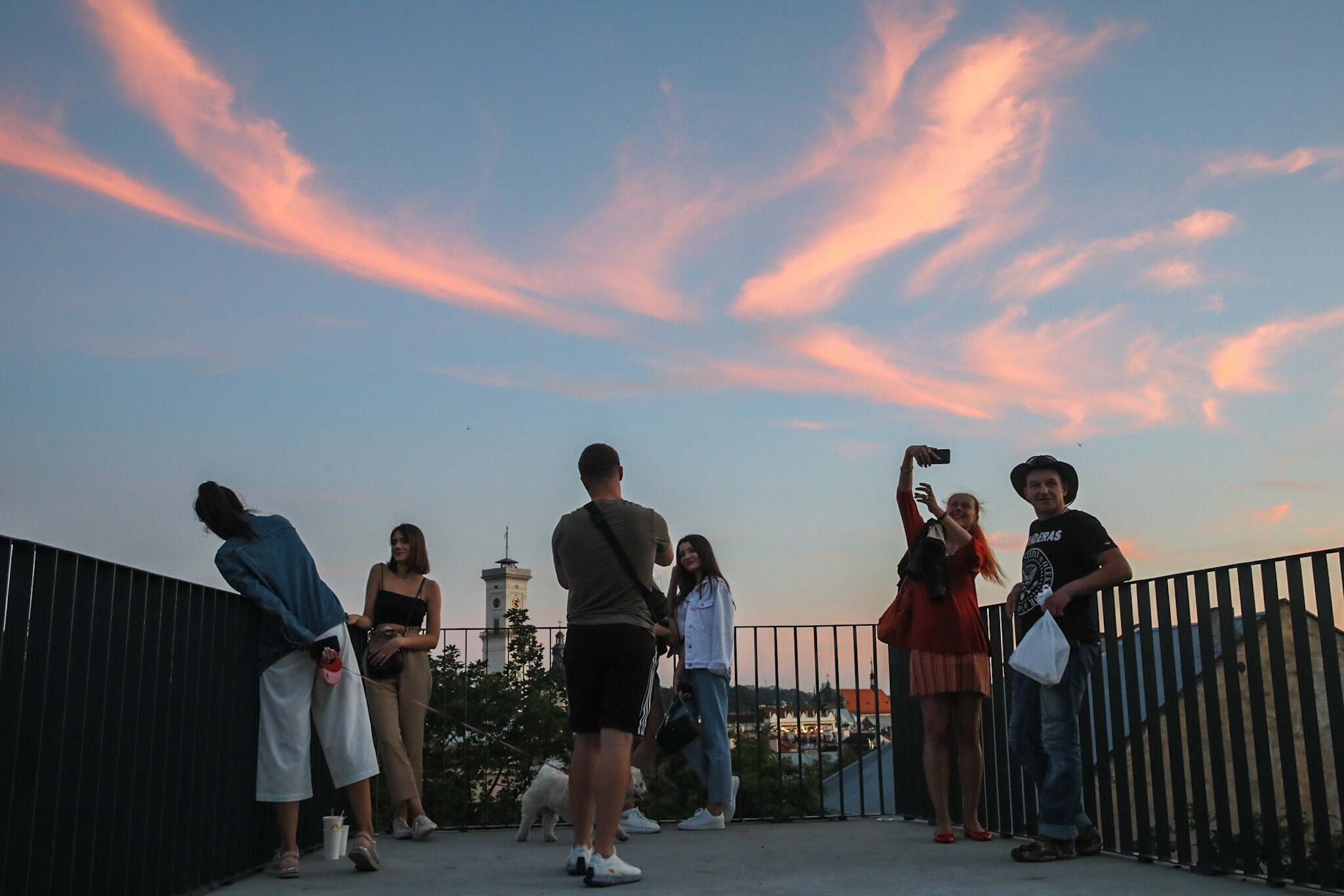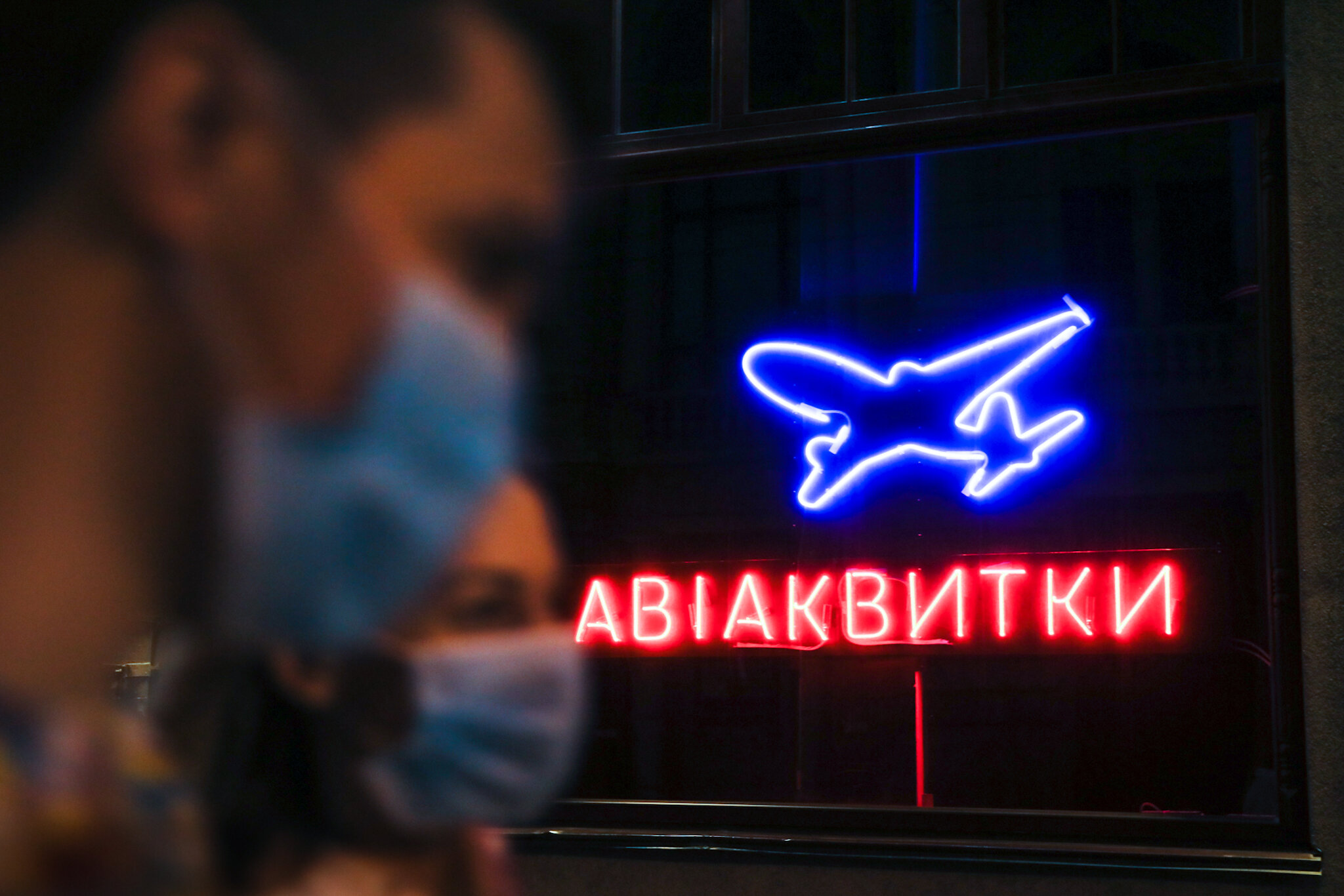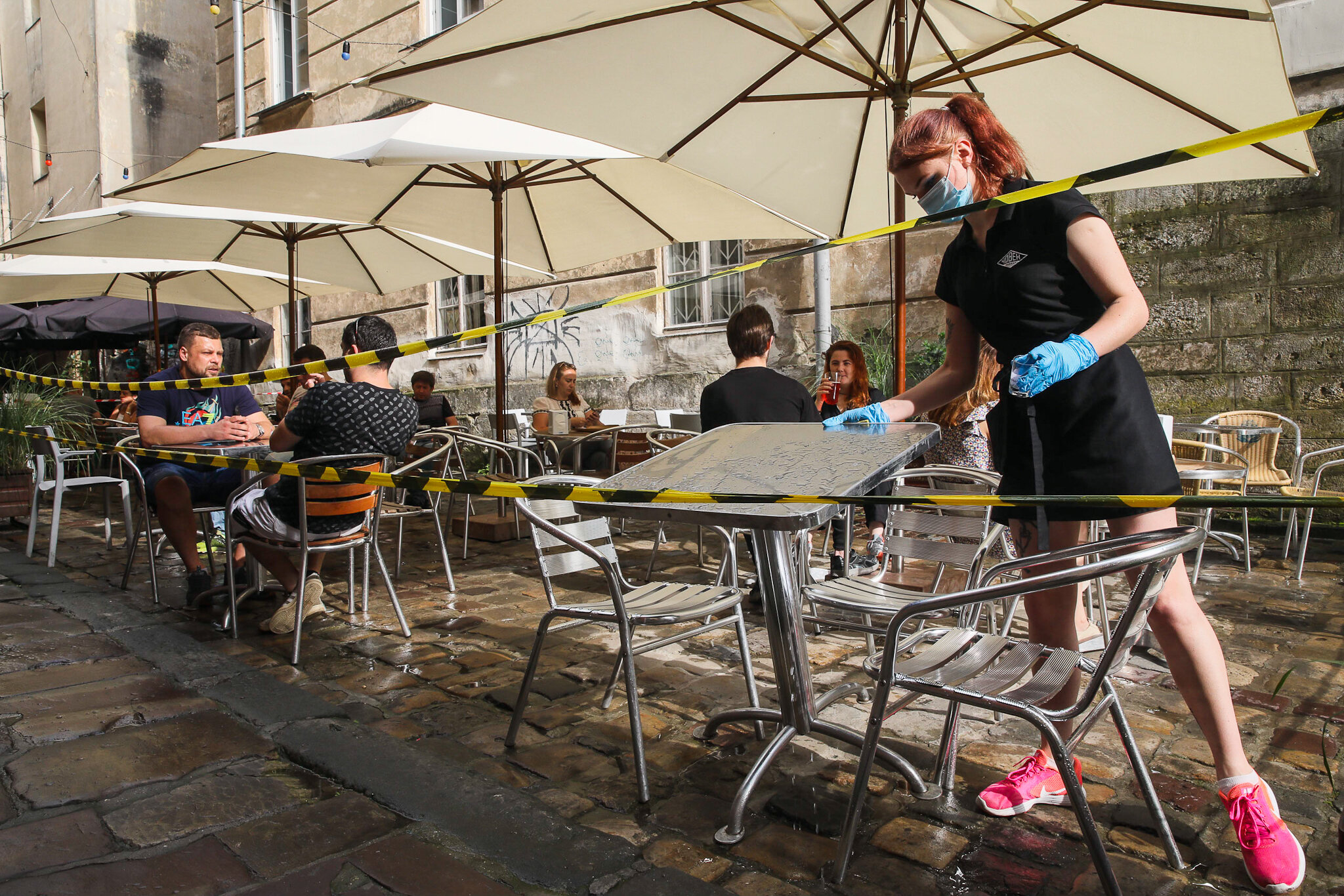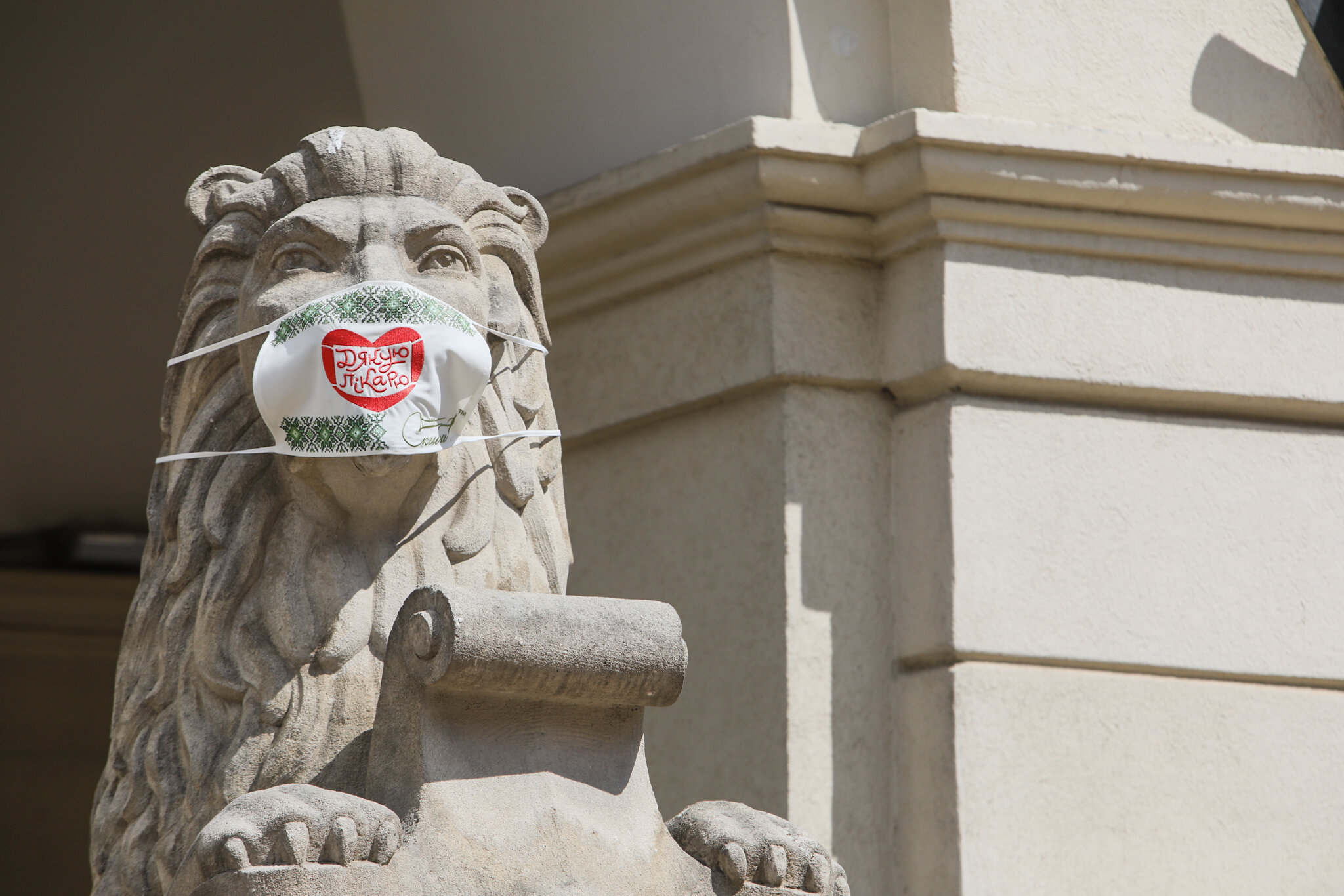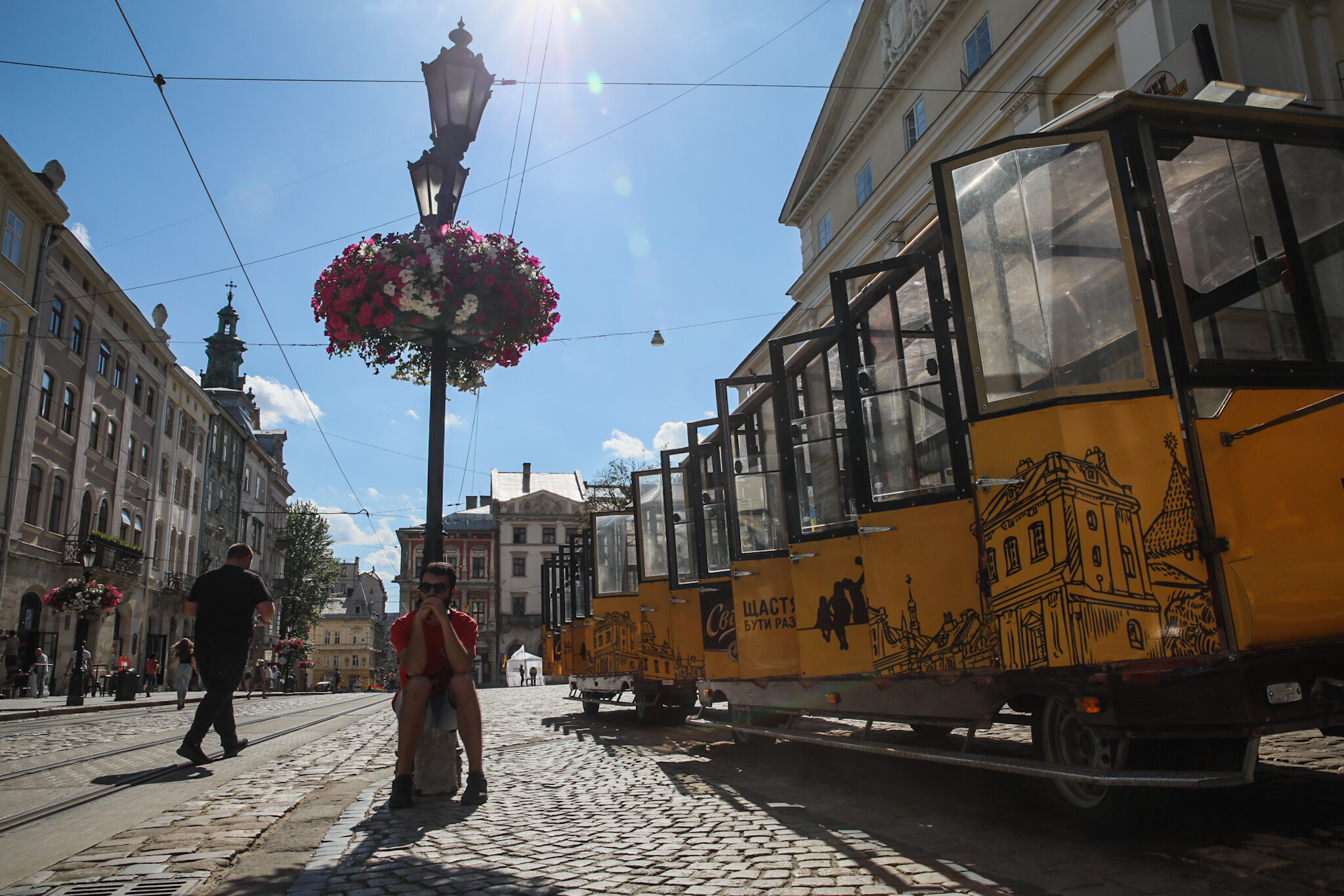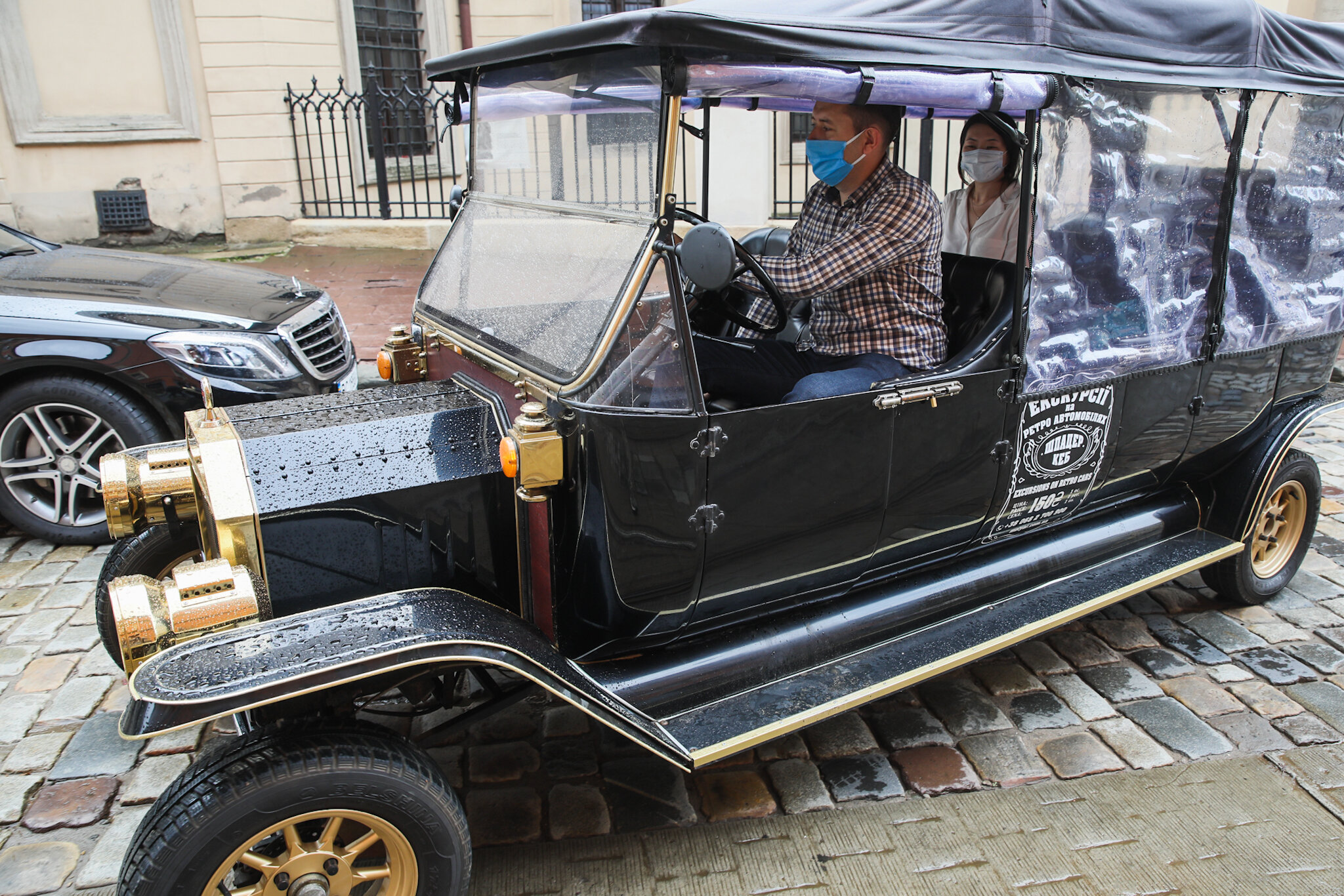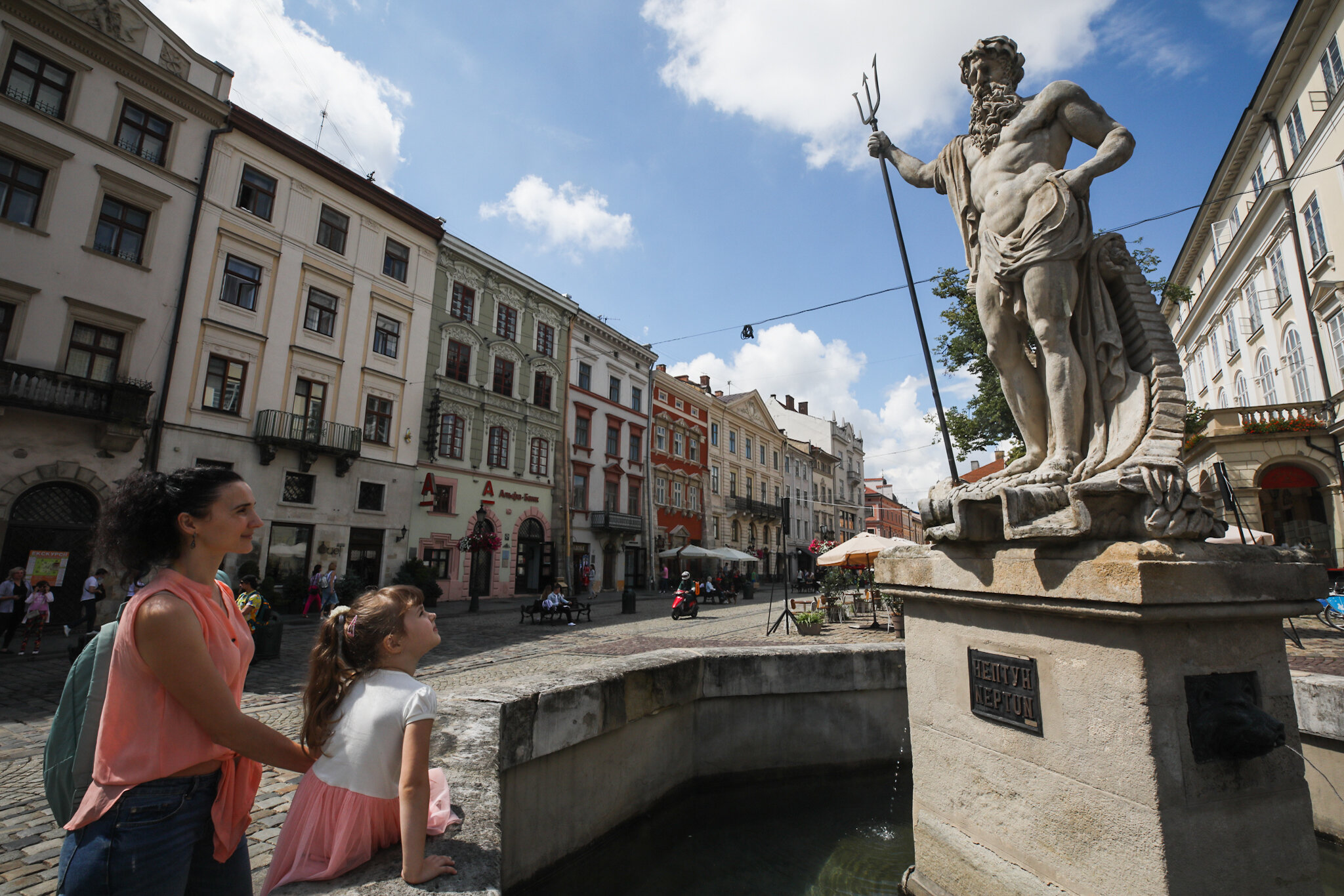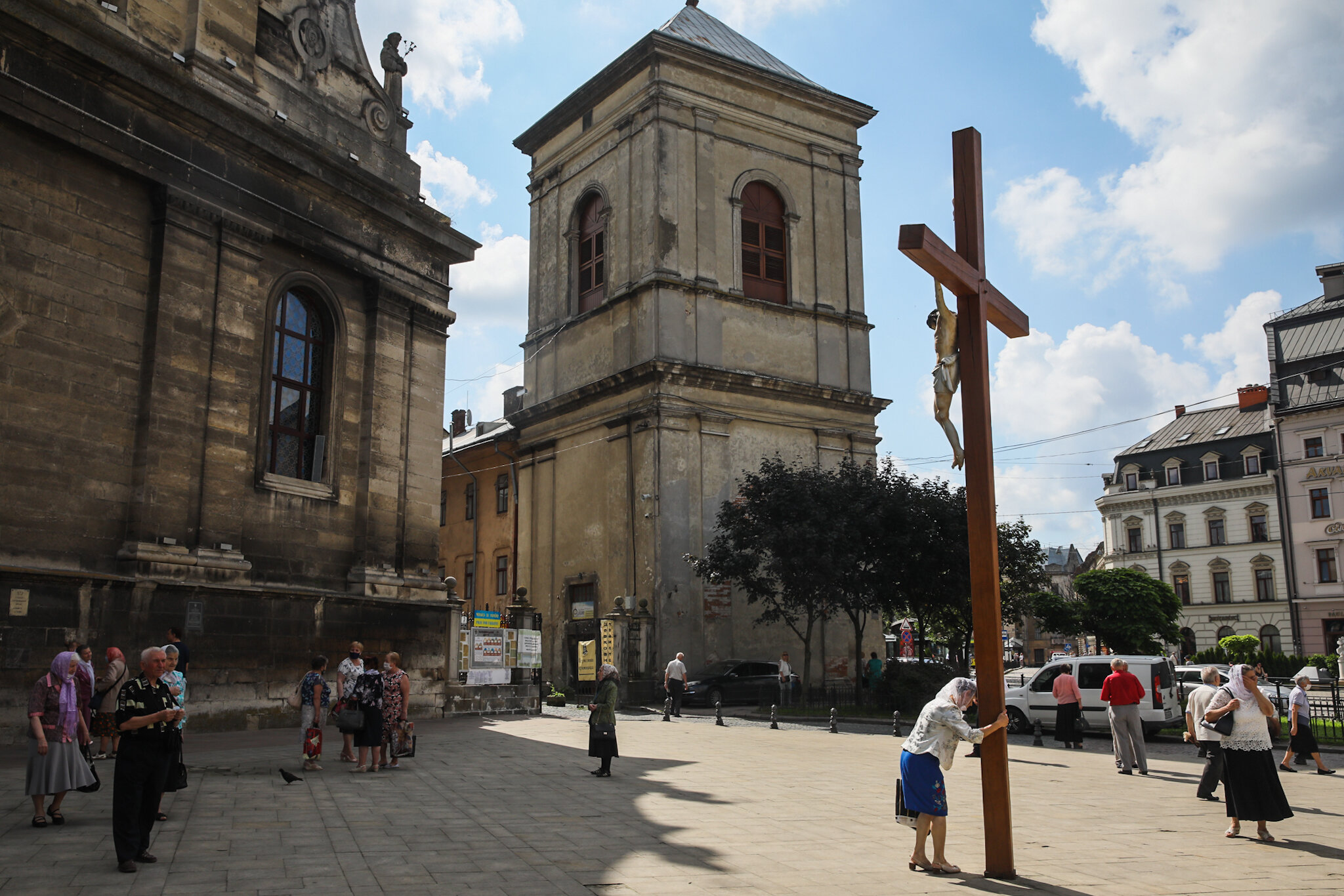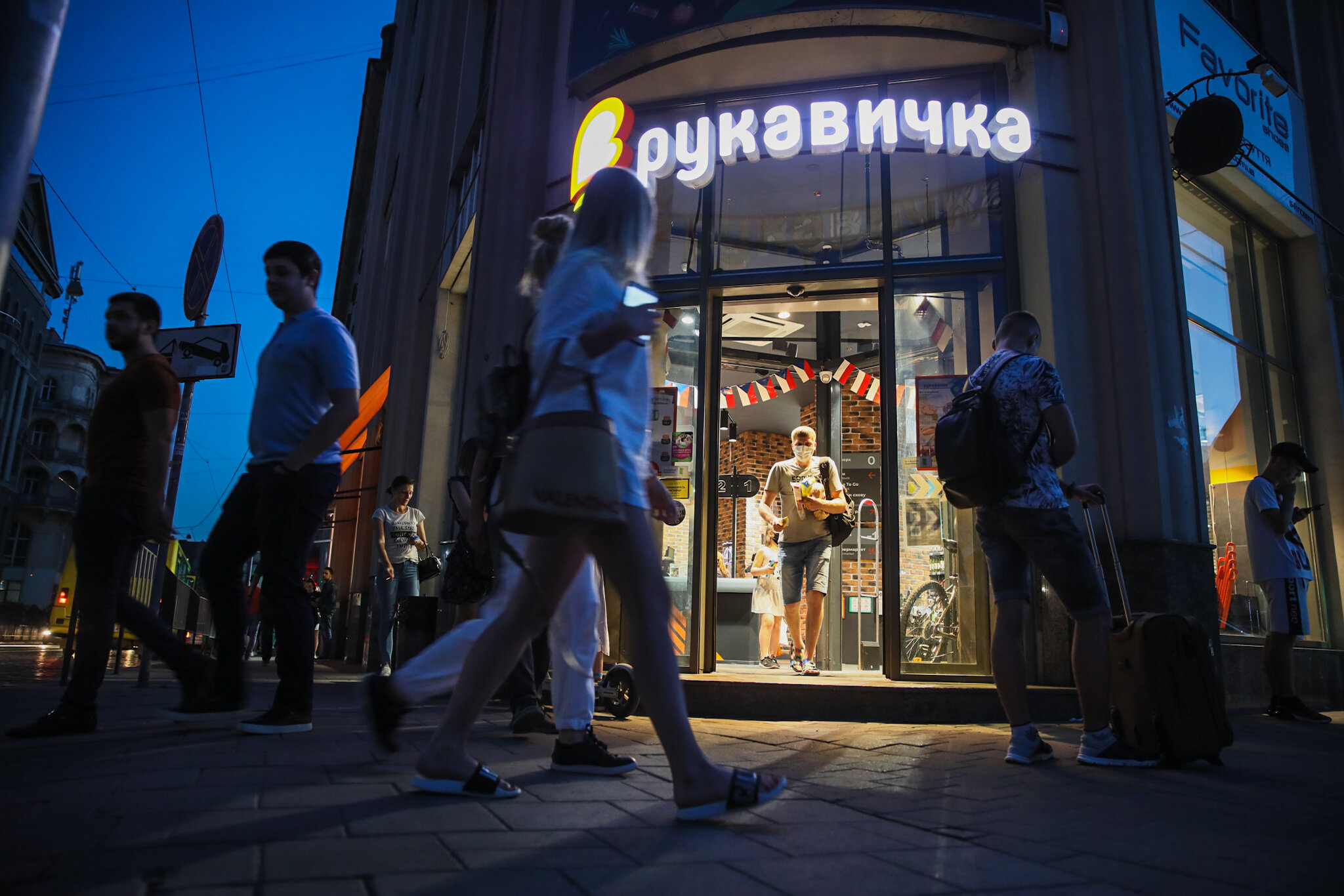LVIV, Ukraine — In the first four days of work after lockdown, tour guide Rostyslav Kosolovych had 12 clients.
That was less than half of the people he could have driven around Lviv’s historical city center in a replica of a classic 1915 Ford Model T in one day before the coronavirus pandemic.
Kosolovych is the manager at a company that offers guided tours in vintage cars. Now, however, he’s getting behind the wheel more himself. In 3.5 months of quarantine, he lost three of his four employees. Finding new ones will take time and training, and the business prospects look bleak.
“We don’t know what will happen next. Any moment everything can change and shut down again,” he told the Kyiv Post on July 3. “Now we are fighting to survive.”
Lviv, the tourist gem of western Ukraine, has cautiously reopened to visitors after buses, trains and flights resumed. The city is betting on staycationers this summer as the European Union keeps its borders closed for Ukrainian travelers.
But hopes for a tourism rebound are low and the local hospitality industry is struggling to stay afloat. Ukraine continues to register hundreds of COVID‑19 cases daily, often with over 100 in Lviv Oblast, and money is tight for everyone.
“Let’s face the truth. Many people lost their incomes during the lockdown and now think about making ends meet, rather than traveling,” Kosolovych said.
New hot spot
Reviving Lviv’s economy is fraught with uncertainty and risk. Lviv Oblast is now one of the COVID‑19 hot spots in the country.
Its case count jumped from a little over 2,500 confirmed cases as of May 12, when the first stage of easing the restrictions began, to over 6,500 cases as of July 8.
Currently, Lviv Oblast has 5,418 active cases — more than any other region in the country in absolute numbers, followed by the city of Kyiv and Chernivtsi Oblast. Over half of those cases are registered in the city of Lviv.
In terms of active cases per 100,000 people, Lviv Oblast comes second after the neighboring Chernivtsi region, where the pandemic first hit Ukraine.
So far, 170 people have died in Lviv Oblast, 2.5% of the total number of the infected. According to regional health officials, 40% of beds are occupied in hospitals designated for treating COVID‑19 patients. The average patient age is 54.
Nataliya Timko, chief epidemiologist for Lviv Oblast, links the surge in new cases to reopening and people ignoring social distancing and masking — a widespread trend that has forced some cities and states around the world to re‑impose lockdowns.
Another reason is scaled‑up testing, which is reflected in official figures. No other Ukrainian region or city tests more per 100,000 people than Lviv Oblast.
But it wasn’t always the case. Until about a month ago, the Lviv regional laboratory had 2,500 samples waiting to be tested with polymerase chain reactions (PCR) while it carried out only 350 tests per day.
People who were suspected of having the coronavirus complained about waiting for results for up to two weeks. Sometimes, the results came too late, after a patient had already died.
The bottleneck has since been resolved, Timko said, and the wait time for results has decreased to between one and three days thanks to the help of state laboratories in Kyiv, Ternopil and Kropyvnytskyi. Moreover, officials now include the PCR test results from private labs into the tally.
“The more we test, the more we detect and isolate the infected, the better,” Timko said. “But people, too, have to obey the rules of self‑isolation.”

Lviv Mayor Andriy Sadoviy looks over Ploscha Rynok from the balcony of his office as he speaks with the Kyiv Post on July 2, 2020 (Photo by Volodymyr Petrov)
Going into lockdown again to curb the spread of the coronavirus is out of question, says Lviv Mayor Andriy Sadovyi. The economic pain has been too great to force citizens into their homes again.
“It will be impossible to do. People are at the brink. Their incomes have dropped. The city’s revenues have dropped,” he said in an interview in his office on July 2.
“Considering that Ukraine can’t pay compensation to businesses and vulnerable groups of the population like the EU countries, our only chance is to find a balance between operating businesses and high‑level safety measures.”
State laboratories have been in charge of testing since the early days of the outbreak. Now, Sadovyi wants to open a city laboratory that would carry out up to 500 PCR tests per day.
“We saw that the state monopoly is not always right,” he said.
“I feel like a tightrope walker. On one side, there are businesses and people. On the other side, the central government and safety. Often, the proposed solutions are not entirely rational and need to be corrected with respect to the local specificity,” Lviv Mayor Andriy Sadovyi
New rules for hospitality and travel
On a balmy Saturday night, Lvivans flocked to the city center. With the tourists gone, they had it all to themselves.
After months of home confinement that dragged on longer than anyone expected, they visibly enjoyed being out again, sitting on cafe terraces and hopping from one eatery to another.
Most restaurants adopted new rules: outdoor seating only, body temperature checks, frequent disinfection, masks and QR code stickers so that customers can study the menu on their smartphones.
Still, too many tables were empty on a weekend in what would be the peak of the tourist season were it not for the pandemic.
Mayor Sadovyi says the city’s tourism and hospitality sector has lost approximately $500 million. Last year, Lviv hosted some 2.5 million visitors from other parts of Ukraine and abroad. Most would come for 2.5 days and spend $85 on average.
The iFest holding — which owns many iconic Lviv establishments recognizable by any visitor such as Drunken Cherry bar, the Ukrainian Insurgent Army‑themed restaurant Kryivka, and Pravda Brewery — was forced to shut down its restaurants, bars and coffee shops across the country and furlough some 1,800 employees during the lockdown.
The company owners tried to give people jobs, and some restaurant staff switched to work in food delivery and sewed masks at home. And when summer terraces reopened, they started hiring workers back gradually.
But business is far from recovery.
“I don’t think we will make any profit this year. Now it is important for us to weather the storm and keep the majority of our employees,” Yuriy Nazaruk, co‑owner of iFest, said in an interview on July 2. “It’s survival and preservation mode.”
With the new public safety requirements, iFest has not reopened its Opera Underground cocktail bar and plans to develop its festival space, iFest Republic. It sits on two hectares surrounding a former industrial plant. As mass events are still banned, Nazaruk and his partners want to turn it into a destination for family leisure, since spacious open‑air areas will be in demand.
We believe that there can’t be a successful venue for tourists if locals don’t go there,” Nazaruk said. “There are few tourists in Lviv now, and we work with the local public. It is a smaller audience but it allows us to move forward.”
“A restaurant is a composite of many factors. A customer comes for some experience and emotions, and it is impossible to pack them up in a thermobox and deliver them to the home,” Yuriy Nazaruk, founder of iFest holding.
Trains from Kyiv and Odesa relaunched two weeks ago and run half‑empty to maintain the distance between passengers. Low‑cost domestic and international flights at Lviv airport resumed at the beginning of July, but the passenger flow depends on travel restrictions.
At the moment, Ukrainian citizens are barred from entering EU countries unless they hold residency there. Simultaneously, Ukraine requires medical insurance covering COVID‑19 from all foreign visitors and a negative PCR test (or 14 days of self‑isolation) from those arriving from “red zone” countries, which have 40 or more cases of the coronavirus per 100,000 people.
Against all odds, visitors are slowly trickling back to Lviv, one of the most popular destinations in Ukraine.
Valeria Honcharova from Kyiv brought her 13‑year‑old daughter to Lviv for the first time. But the teenager seemed to be disinterested in the history and architecture, so Honcharova took a guided walking tour on her own.
“Children are glued to the internet these days,” she said, standing next to a statue of Polish painter Nikifor (Epifaniy) Drovnyak.
Asked whether she was concerned with the epidemiological situation in the city, she replied she was not and felt safe.
Sean Robertson from San Francisco came to visit his wife Elena in Dnipro at the end of February and got stranded there when the borders closed. He lost his job in advertising when the pandemic hit and said he was figuring out what to do next.

U.S. citizen Sean Robertson and his wife Elena traveled to Lviv from Dnipro on July 1, 2020 (Photo by Volodymyr Petrov)
The couple traveled to Lviv on July 1 for several days before setting off on a road trip to the Carpathian Mountains.
“This is the first western Ukrainian city I have had a chance to see. It is beautiful,” Robertson said.
An Estonian couple, Villu and Kaire Kool, arrived in the city on July 4 on the first post‑lockdown Wizz Air flight from Tallinn.
Villu visited Kyiv back in 1982, but otherwise it was their first trip to independent Ukraine.
“It’s very nice. People are friendly, and architecture is beautiful,” he told the Kyiv Post. “We are surprised. We didn’t know much about Lviv.”
After four days in Lviv, the couple will have to self‑isolate upon return to Estonia.
Editor’s Note: As this story was going into print, the media reported that Estonia had suspended flights to Ukraine, Belarus, Russia, Sweden, and Portugal until July 28 due to the high coronavirus rate in those countries.






